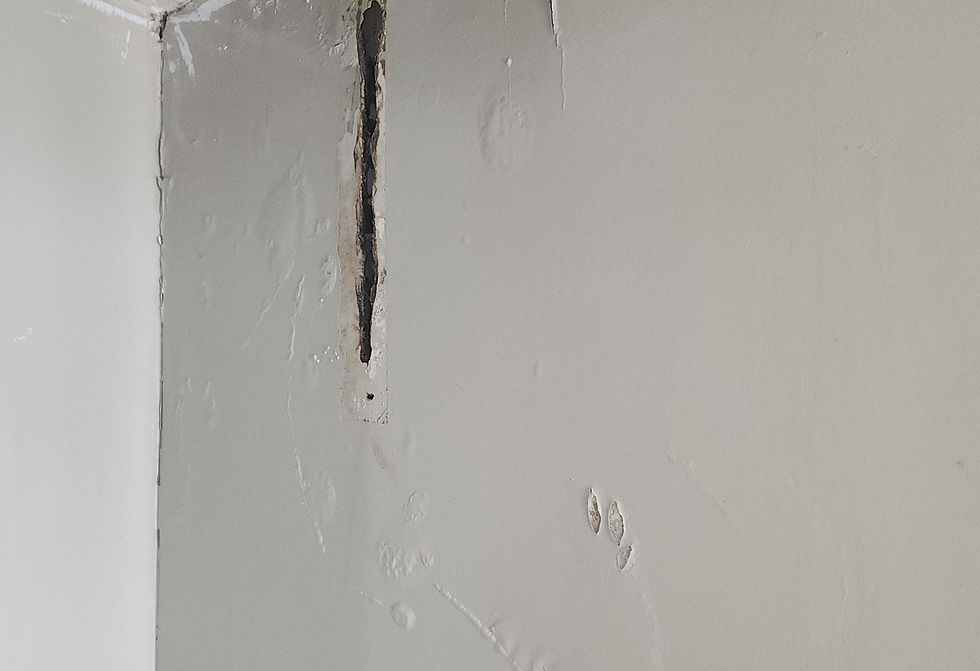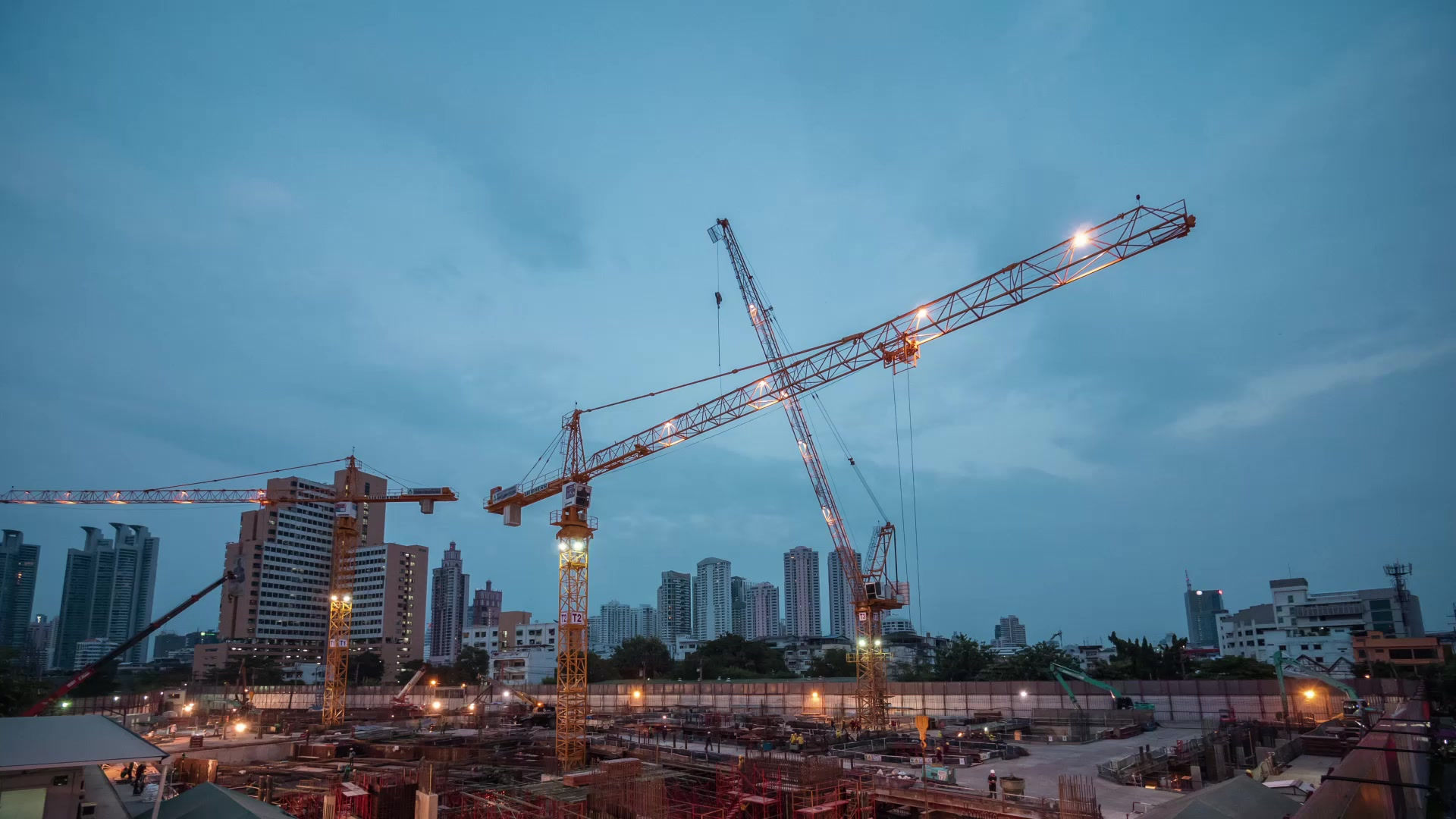Understanding Water Ingress in High-Rise Buildings: Common Causes and What Strata Managers Need to Know
- Agustín Gamoneda
- Jul 1
- 6 min read
Updated: Jul 30
By Commercial Building Façade Solutions Façade Remediation Specialists
As a strata manager, staying on top of building health isn’t just about maintenance schedules and paperwork. You’re also a key player in preventing long-term damage — especially when it comes to water ingress.
Water ingress isn’t always obvious. It can begin subtly, through damp carpet edges or minor staining — but if left unresolved, it can lead to structural damage, mould outbreaks, and significant insurance implications. More importantly, the visible signs often point to deeper, systemic construction or design failures.
Here’s a breakdown of the most common causes we see in high-rise strata buildings — and what you need to know to act early and protect your assets.
1. Missing or Non-Compliant Sub-Sill Installations

What it looks like:
Water staining or damp carpets near sliding doors
Rusting or staining along the floor slab beneath windows
Moisture intrusion around door tracks
The root cause:
Sub-sills — a critical drainage element beneath external window or door frames — are either missing, incorrectly installed, or not compliant with current standards. Without a sub-sill, water can bypass the door system entirely, tracking directly into the floor zone beneath carpets or timber flooring.
Technical Reference:
According to AS2047 – Windows in Buildings and the National Construction Code (NCC) 2022, Vol 1, all external window and door systems exposed to the elements must include a compliant sub-sill drainage and flashing system. These systems are designed to collect and redirect water outward before it enters the internal structure — a fundamental requirement for weatherproofing high-rise façades.
2. Failed Waterproofing Membranes on Balconies

What it looks like:
Water intrusion into internal rooms adjacent to balconies
Visible mould growth or concrete staining
Swollen skirting boards and persistent damp smells
The root cause:
The waterproofing membrane beneath the balcony tiles has either failed, was poorly installed, or has deteriorated with age. Many older installations suffer from inadequate surface preparation or poor detailing — especially at balcony edges, upturns, or around drainage points where leaks typically begin.
For example, we’ve seen balconies where water was pooling near the balustrade posts, and because the membrane hadn’t been properly detailed around those penetrations, water was tracking directly into the slab and down into the apartment below.
Technical Reference:
AS4654.2:2012 – Waterproofing Membranes for External Above-Ground Use outlines the required methods and materials for effective balcony waterproofing. It specifically calls for proper substrate preparation, minimum thickness requirements, and correct membrane termination at upstands and edges.
In addition, Section FP1.4 of the NCC 2022, Vol 1 (Weatherproofing) mandates that buildings must be constructed to prevent water from penetrating into the internal structure. Non-compliance with these standards can result in hidden damage, failed finishes, and costly remediation — not to mention insurance disputes.
3. Sill Track and Sub-Frame Failures

What it looks like:
Leaks during storms or wind-driven rain
Moisture ingress at the base of window frames
Sealant failures where aluminium meets masonry or cladding
The root cause:
Poor detailing where the base of window systems meets the external wall — particularly at transitions between different materials. Sealant may be missing, cracked, or incompatible, and sub-sill drainage components (such as dam end seals) may be absent or improperly installed.
Why it matters:
These junctions are high-risk zones for water ingress. Even minor sealant failures can allow water to track into the wall cavity, leading to hidden dampness, mould growth, and eventual material degradation.
Recommendation:
Sill junctions must be properly sealed using compatible, flexible waterproofing compounds. Sub-sill drainage systems — including correctly installed dam end seals — should be used to direct water safely away from the wall cavity.
Technical Reference:
AS2047 – Windows in Buildings requires that windows be installed with adequate provisions for drainage and water management, including sill flashings and appropriate sealing between dissimilar materials. In addition, Section FP1.4 of the NCC 2022, Volume 1 (Weatherproofing) mandates that external elements must prevent water from penetrating into the structure.
4. Differential Movement or Framing Tolerances

What it looks like:
Leaks appearing at panel junctions or random sections of curtain wall glazing
Water pooling at certain panels
Inconsistent alignment between window sections
The root cause:
Structural tolerances during installation — or settlement over time — can result in the window panel sitting slightly lower than adjacent panels (often by 10mm or more). This creates a trough where water pools and eventually penetrates due to insufficient slope or weep path drainage.
For example, we’ve investigated cases where the centre mullion of a three-panel glazed unit had settled slightly due to slab deflection, causing stormwater to pool and overwhelm the weep holes. Because the system hadn’t been designed to tolerate that level of movement, water tracked into the head of the panel below.
Solution:
Curtain wall systems must be designed and installed with appropriate gradients and drainage paths to ensure water can escape. Any tolerance issues must be accounted for during design and verified on installation.
In cases like the one above, retrofitting additional drainage points and resealing the head joint resolved the issue without requiring full panel replacement — but ideally, this is addressed during the original design phase.
Technical Reference:
AS4284 – Testing of Building Façades sets out the performance criteria for façade systems, including resistance to water penetration under simulated wind-driven rain. It requires that curtain wall assemblies be tested for both static and dynamic conditions to verify that water is effectively drained — even under differential deflection and structural movement.
5. Water Tracking Internally from Upper Levels

What it looks like:
Water stains or bubbling paint on lower floors with no visible local source
Drips running down fire stairs, lift shafts, or internal walls
Persistent damp near service risers or slab penetrations
The root cause:
These leaks are often deceptive — the water seen on Level 3 may have entered from the roof or balconies many storeys above.
In one case, a failed rooftop planter membrane let water into the slab edge, where it seeped behind the façade and tracked down inside the wall cavity. It finally emerged through a stairwell wall three floors below. Inside wall cavities, water follows the path of least resistance — along conduits, pipe penetrations, or slab joints — often appearing far from where it began.
Patching the visible leak won’t stop the flow. The water will simply reappear elsewhere.
Strata Insight:
Addressing the symptoms — repainting, sealing, or applying waterproofing at the visible leak — won’t solve the issue unless the source is found. That’s why inspections must cover the full vertical envelope. If signs appear on Level 3, start your investigation at Level 10 — especially around roof membranes, slab edges, and balconies.
What Strata Managers Can Do
Commission a Comprehensive Inspection:
Skip the guesswork and avoid costly patch jobs that only treat symptoms. Engage façade remediation specialists who can carry out detailed inspections — including invasive testing where needed, moisture mapping with thermal imaging, and photographic reporting. These investigations don’t just show where the leak appears, but why it’s happening — whether it’s a failed membrane, poor drainage design, or structural movement. Think of it as getting an MRI for your building rather than just applying a band-aid.
Verify Compliance with Key Standards:
When commissioning repairs or remediation, don’t settle for “near enough is good enough.” Ensure all work complies with the relevant standards:
AS2047 – for window performance, air and water penetration
AS4654.2 – for waterproofing balconies and vertical façades
AAMA 501.2 or AAMA 511 – accepted on-site testing standards for water penetration in façade systems (adopted from the U.S.)
NCC 2022, Volume 1 – Section FP1.4 – for legal weatherproofing compliance
Ask for documentation, warranties, and certifications — especially for membranes, flashing, and drainage components. If these elements fail and aren't compliant, strata may be liable and insurance claims could be rejected.
Schedule Preventive Maintenance:
Waterproofing systems are not install-and-forget — they age, move, crack, and break down. Even if no leak is currently visible, water ingress may already be at work behind the surface. A scheduled façade audit every 5 to 7 years gives you a proactive view of the building’s condition, helping you catch and resolve issues before they damage interiors, escalate costs, or affect tenants.
Educate Committees and Owners
Water ingress is rarely just a patch-up job or a minor nuisance. It’s often systemic — the result of outdated construction methods, poor detailing, or years of deferred maintenance. Help owners and committees understand the broader picture: untreated ingress can lead to mould, air quality issues, structural weakening, and insurance complications due to non-compliance.
A clear, illustrated report showing the origin and path of water through the building can go a long way in shifting committee mindset from reactive to preventative.
Conclusion: A Proactive Approach is Your Best Defence
Water ingress in high-rise buildings isn’t just an inconvenience — it’s a signal. A sign of poor detailing, ageing membranes, or non-compliant construction. For strata managers, understanding the warning signs and working with experienced professionals is essential to protecting building assets and avoiding repeat repair costs.
Need Expert Advice?
Contact Mike from CBFS for a comprehensive façade and waterproofing assessment.
Our team specialises in end-to-end remediation with:
✔️ Full photographic reporting
✔️ Testing and reporting to AAMA 501.2
✔️ NCC and Australian Standards compliance
✔️ Durable, warrantable outcomes that protect your building and its residents

Comments